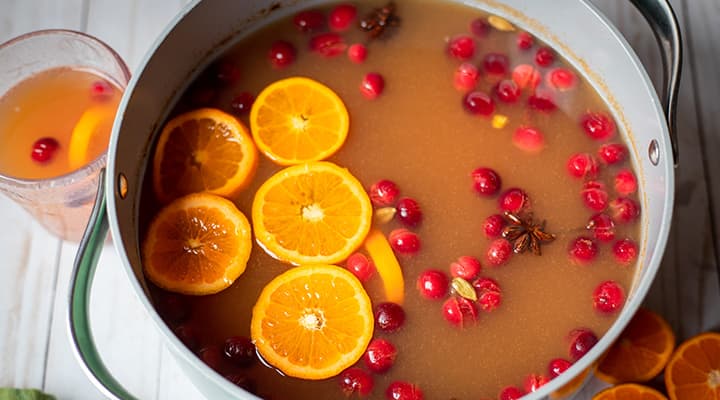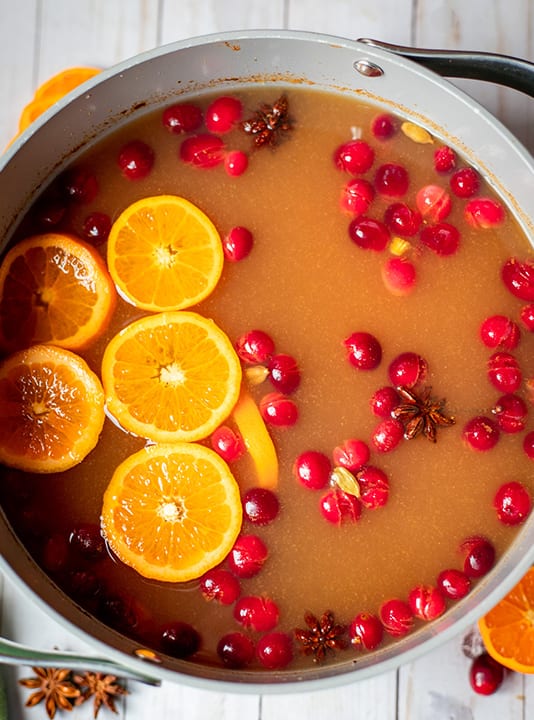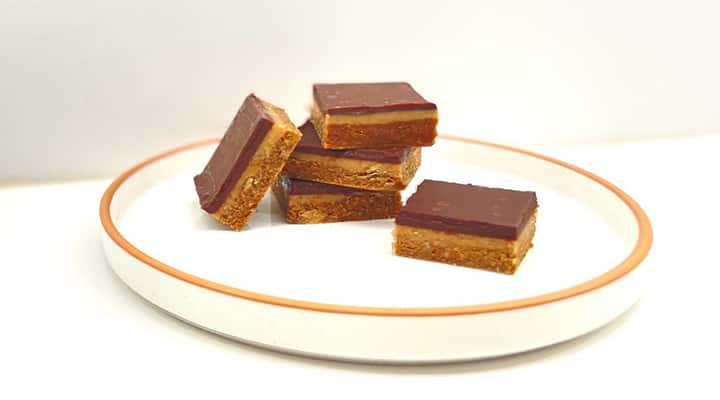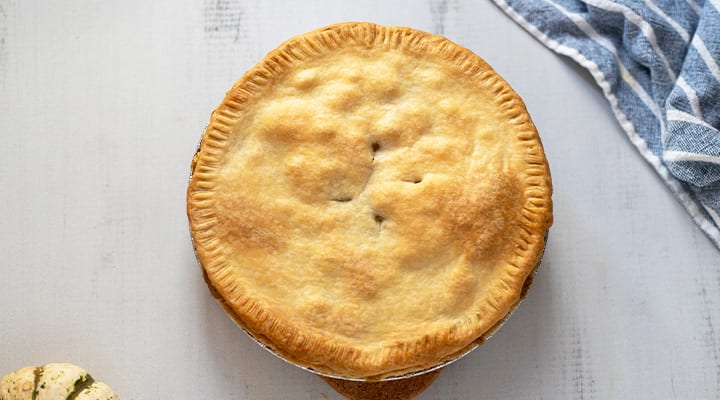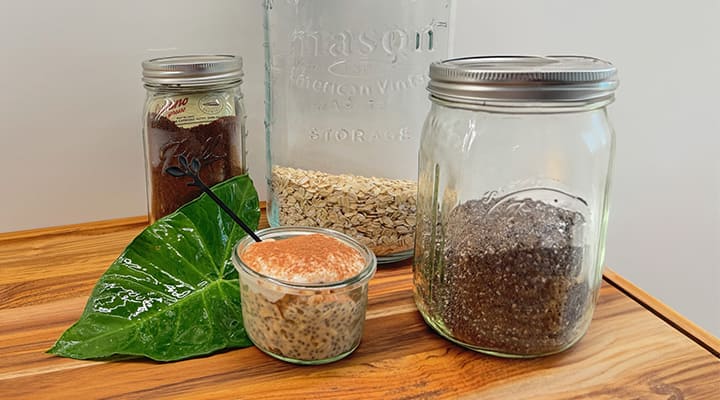
Mulled Apple Cider Recipe: A Cozy Drink
Published: December 2022
The winter season is filled with comforting scenes, sounds and scents, especially the smell of cookies baking and mulled apple cider simmering on the stovetop. The taste of this sweet, warm drink is just as good as the hot apple cider scent. This mulled cider recipe not only warms you up on a chilly winter day, but its fruits and spices deliver health benefits that are especially welcome during the winter season.
What is mulled cider?
Mulled cider is apple cider that has been simmered and sweetened with different ingredients. Depending on the recipe, it tastes similar to liquid apple pie. Making mulled cider is like making mulled wine: you simply add spices and fruits to your base, in this case fresh apple cider, and heat it on a low flame or in a slow cooker or crock pot. This delicious warm, spiced cider recipe is perfect for crisp fall and winter days. Hot mulled apple cider on the stovetop gives your entire home a cozy vibe because of the delightful fragrance of simmering cinnamon and apples.
Where did mulled cider originate?
Hot mulled cider is a traditional winter drink from Great Britain. Most old-fashioned mulled cider recipes contain some sort of alcohol, like rum or brandy, for additional warming properties. Hot mulled cider is particularly popular in the New England region of the United States. For me, warm, spiced apple cider brings back core memories of my childhood days spent apple picking in local orchards. On a chilly day, I find nothing is better than a warm mug of mulled apple cider made from fresh, local apples.
Is mulled apple cider good for you?
Mulled apple cider contains nutrients found in apples, including antioxidants like polyphenols. Antioxidants help protect against oxidative stress to keep cells healthy. Apples are also rich in quercetin, pectin, vitamin C, vitamin E and fiber.
Although fresh whole apples are the healthiest way to consume the nutrients from apples, apple cider is also healthy. When mulled with spices and fruits, the cider becomes infused with flavor and the properties of the spices you use. Many of these spices—such as cinnamon, cloves, fresh ginger and nutmeg—are great for supporting immune health and function. Another health benefit of unfiltered mulled apple cider is that it may help maintain regular digestive health thanks to the fiber. But keep an eye on the sugar content of your apple cider recipe, as it can range fairly high.
What spices are used in mulled cider?
Mulled cider is chock full of warming spices that add depth and flavor to this cozy drink. Many of the spices used are the same as those in apple pie or pumpkin pie. Seasonal ingredients like cinnamon sticks, cloves, nutmeg, allspice berries, star anise and cardamom pods can be used. Some people also include orange peel or orange zest and fresh cranberries in their mulled apple cider recipe.
Does mulled cider have alcohol?
Mulled apple cider recipes often contain alcohol, but this is optional. A sweet apple cider base is sufficient. Many people add rum, bourbon or brandy to their mulled cider recipe to increase the warming properties and to make a festive alcoholic drink for the holidays. However, it is not a must-have, and a non-alcoholic mulled cider recipe can be enjoyed as a mocktail that is just as tasty as the alcoholic version.
What does mulled cider smell like?
Hot mulled cider fills your home with the most intoxicating and festive fragrance. For me, it smells like winter holidays. It is the best potpourri, similar to the scent of homemade apple pie or apple crisp. The smell of cinnamon and apples is unmistakable and gives your house a distinct holiday feel. Fill a slow cooker, or pop a pot on the stove, with all the ingredients, put on some holiday music while the cider mulls, and you have the perfect recipe for a cozy day.
Mulled cider vs. apple cider: Is there any difference?
Although apple cider is a seasonal drink that is very enjoyable, it is a completely different experience from mulled cider. Like apple juice, apple cider is usually served cold, and it is very refreshing with a taste a bit sweet and a bit tart. Mulled cider is simmered, sweetened and spiced and served warm. The taste and experience are like night and day.
How long does mulled cider last?
This recipe will last for 3-4 days when properly stored in the fridge. Before storing, strain the cider, collect the juice and let it cool completely before covering it. If it begins to smell and taste like vinegar, it has begun to ferment and should be discarded.
Can you reheat mulled cider?
If you have leftovers from this recipe, it is fine to reheat the cider to serve it again. It is best to do so over a low flame or in a slow cooker. Do not boil it, just reheat and enjoy.
Explore Our Best Glucose Management / Blood Sugar Supplements
How to make mulled cider, step-by-step
The first step in making this mulled apple cider recipe is to select a good quality pre-made cider (not apple juice) from the grocery store or farmer’s market. I like to choose a local brand that is made from fresh locally grown apples. Then gather the whole spices, fresh cranberries, and lemons or oranges for your recipe. I also select a locally made pure maple syrup for a sweetener. This way, I can max out the seasonal vibe on this recipe.
Ingredients:
1 gallon fresh apple cider
4 seedless oranges sliced (I like mandarins)
1 cup fresh whole cranberries
6 whole cloves
5 cinnamon sticks
4 star anise
4 green cardamom pods
4 tbsp pure maple syrup
A few grates of nutmeg
Preparation:
- In a large pot, add orange slices, cranberries, maple syrup, cloves, cinnamon sticks, star anise, cardamom and grated nutmeg. Pour the gallon of cider over these ingredients.
- Over medium-high heat bring the pot up to almost boil, then turn it to low heat and mull for at least 30 minutes.
- Ladle into mugs and serve warm. Garnish with orange slices.
Nutritional Values
Calories: 143 kcal
Carbohydrates: 35 g
Protein: 1 g
Fat: 1 g
Saturated Fat: 0.1 g
Polyunsaturated Fat: 0.1 g
Monounsaturated Fat: 0.1 g
Sodium: 11 mg
Potassium: 308 mg
Fiber: 2 g
Sugar: 28 g
All nutritional information is based on third-party calculations and is only an estimate. Each recipe and nutritional value will vary depending on the brands you use, measuring methods and portion sizes.
Tips for Success
- Making hot mulled apple cider is easy, and this recipe can be tailored to your preferences. I like the tartness the cranberries add to this recipe but if you do not, simply leave them out.
- Always use the whole spices (such as whole cloves, cardamom pods and cinnamon sticks) as the ground versions will make the cider muddy and ugly.
- This recipe can be tailored easily to your tastes. You can use brown sugar in place of maple syrup or add allspice or allspice berries to the mix.
- The grated nutmeg will pool on the surface and can be skimmed off with a fine mesh sieve if you like. Since it is not a huge part of the recipe, it can be left out if you prefer.
- Be sure not to boil the cider. It will not be as good and is likely to break down the fruits too much. We just want a nice slow simmer to mull the cider.
What are the health benefits of cinnamon?
Not only is cinnamon a big part of the tastes and smells of the season, but there is increasing evidence that bioactive compounds in cinnamon can help maintain already-healthy blood sugar levels.
Studies have also found that cinnamon supports healthy weight management, a healthy inflammatory response, and heart and brain health, among other health benefits.
Cinnamon-based supplements
Nutritional supplements can help you get the health benefits of cinnamon all year round. Life Extension’s powerful supplement for supporting already-healthy blood sugar includes a purified, water-soluble cinnamon extract. This extract supports healthy glucose metabolism and helps encourage satiety, that feeling of fullness you get after you eat.
Want to maintain already-healthy blood sugar levels? Life Extension’s quiz can help you find the right nutritional support for your lifestyle.
References
- Anderson, Richard A, et al. “Cinnamon extract lowers glucose, insulin and cholesterol in people with elevated serum glucose.” J Tradit Complement Med. April 2015. https://pubmed.ncbi.nlm.nih.gov/27774415/
- Anderson, Richard A, et al. “Isolation and characterization of polyphenol type-A polymers from cinnamon with insulin-like biological activity.” J Agric Food Chem. January 2004. https://pubmed.ncbi.nlm.nih.gov/14709014/
- Keramati, Majid, et al. “Cinnamon, an effective anti-obesity agent: Evidence from an umbrella meta-analysis.” J Food Biochem. August 2022. https://pubmed.ncbi.nlm.nih.gov/35365881/
- Koutsos, Athanasios, et al. “Two apples a day lower serum cholesterol and improve cardiometabolic biomarkers in mildly hypercholesterolemic adults: a randomized, controlled, crossover trial.” Am J Clin Nutr. February 2020. https://pubmed.ncbi.nlm.nih.gov/31840162/
- Mettler, Samuel, et al. “Additive postprandial blood glucose-attenuating and satiety-enhancing effect of cinnamon and acetic acid.” Nutr Res. October 2009. https://pubmed.ncbi.nlm.nih.gov/19917452/
- Naidoo, Uma, MD. “Spice up your holidays with brain-healthy seasonings.” Harvard Health Publishing. December 2016. https://www.health.harvard.edu/blog/spice-up-your-holidays-with-brain-healthy-seasonings-2016120710734
- Newerli-Guz, Joanna, Śmiechowska, Maria. “Health Benefits and Risks of Consuming Spices on the Example of Black Pepper and Cinnamon.” Foods. September 2022. https://pubmed.ncbi.nlm.nih.gov/36140874/
- Neto, José Claudio Garcia Lira Neto, et al. “Efficacy of Cinnamon as an Adjuvant in Reducing the Glycemic Biomarkers of Type 2 Diabetes Mellitus: A Three-Month, Randomized, Triple-Blind, Placebo-Controlled Clinical Trial.” J Am Nur Assos. March 2022. https://pubmed.ncbi.nlm.nih.gov/33605836/
- Romeo, Giulio R, et al. “Influence of Cinnamon on Glycemic Control in Individuals With Prediabetes: A Randomized Controlled Trial,” J Endocr Soc. July 2020. https://pubmed.ncbi.nlm.nih.gov/33123653/
- Santos, Heitor O, da Silva, Guilherme A R. “To what extent does cinnamon administration improve the glycemic and lipid profiles?” Clin Nutr ESPEN. October 2018. https://pubmed.ncbi.nlm.nih.gov/30144878/
- Silva, Maria Leonor, et al. “Cinnamon as a Complementary Therapeutic Approach for Dysglycemia and Dyslipidemia Control in Type 2 Diabetes Mellitus and Its Molecular Mechanism of Action: A Review.” Nutrients. July 2022. https://pubmed.ncbi.nlm.nih.gov/35807953/
- Wojdyło, Aneta, Oszmiański, Jan. “Antioxidant Activity Modulated by Polyphenol Contents in Apple and Leaves during Fruit Development and Ripening.” Antioxidants (Basel). July 2020. https://pubmed.ncbi.nlm.nih.gov/32630172/
- “Apple Cider: Are There Health Benefits? Nourish by WebMD. November 2020. https://www.webmd.com/diet/health-benefits-apple-cider
Always be in the know!
Access the latest deals, wellness news, expert health tips & more!


